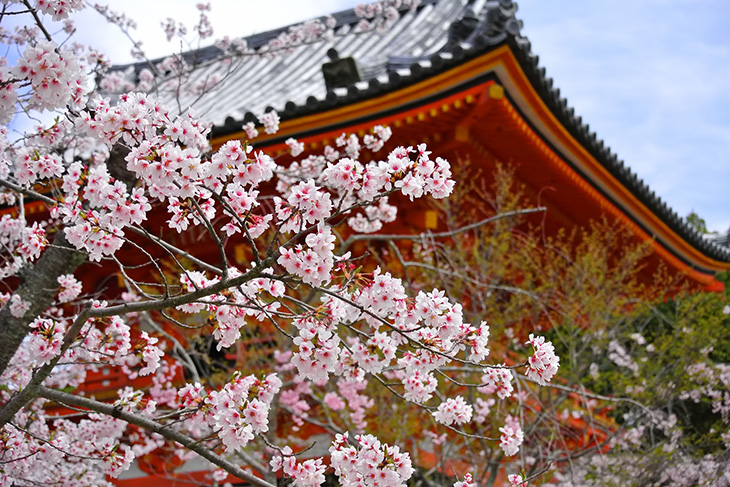Ninna-ji is a Shingon school Buddhist temple established by Emperor Uda in 888.
The temple was cared by the royals or nobles and the position of the chief priest had been chosen from the royals until samurai period was finished in 1868.
The temple and is listed as a UNESCO World Heritage Site.
Things to see

The most famous thing in this temple is sakura, cherry blossom. About 200 cherries are planted in the garden and the garden is full of pale white in the mid of April. Cherries in Ninna-ji bloom later than normal cherry and flowers are double petaled.

Also, Autumn is beautiful – red and yellow maples.
Garden

Basically, the style of the garden is pond-and-hill, however zen gardens is mixed. The building is surrounded by white gravel sand and there is a beautiful pond-and-hill garden behind of white gravel.

You can see a pergola.

The buildings are interesting, too. The style of the building is influenced by noble so it is different from zen temple.You can enjoy the view even from the passage.
Although Spring, cherry blossom season, and Autumn, maple color season are the best, test of the season is good as well, because most of the trees in the pond-and-hill garden are evergreen tree such as pine tree. And during the off season, there are not full of people like Ryoan-ji.
